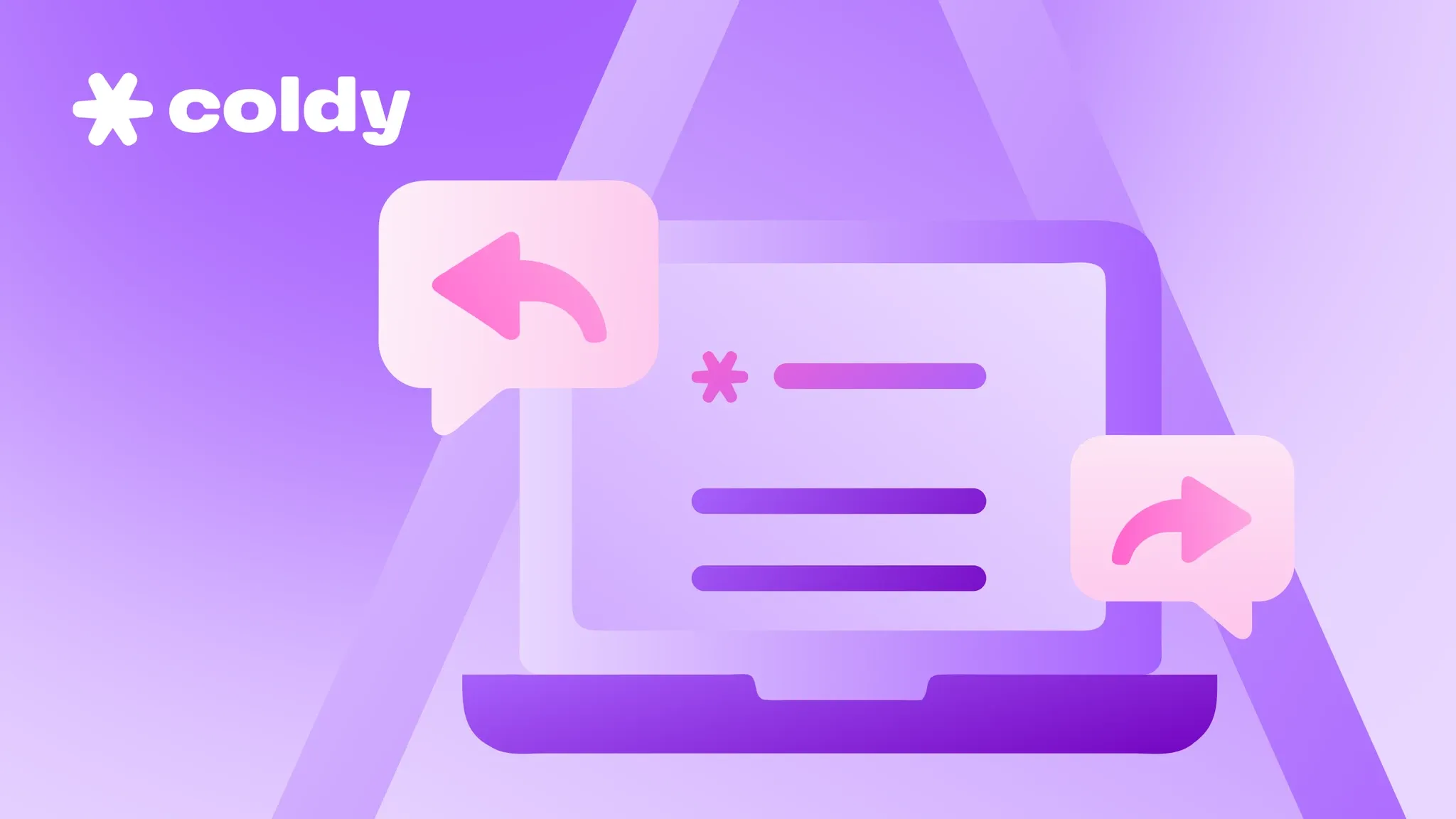Cold emails are letters to a recipient you are not familiar with and who has not given consent to receive emails. Therefore, to make a cold email effective, you need to prepare well. Choose in advance who to write to, what to write, and why. The task is to do this briefly, clearly, and in a way that encourages a response.
Sounds simple? In reality, it is a whole art.
Cold emails still work. Yes, even in 2025. Especially in B2B. Especially if you write them smartly.
In this article, we will discuss:
how effective cold emails are structured,
what mistakes most often lead to zero responses,
and what exactly to write to get a reply.
What are cold emails and why are they needed
A cold email is a letter to someone you have not communicated with before. They were not expecting you, did not subscribe, and did not leave a request. They might not even know about your existence.
A cold email is like the first line at a party where you don’t know anyone. You can start with "Hello, I represent the company 'Daisy' and I would like to offer our services," and receive silence in response. Or you can look around and understand what kind of party you’ve stumbled upon, notice the little things, and talk about them. The most important thing is genuine interest, not a desire to attract attention with clickbait.
Why are cold emails needed:
when you are entering new markets,
looking for specific clients in B2B,
wanting to launch PR, partnerships, or collaborations.
This is not spam and not mass advertising. It is an initiative to start contact. Targeted and to the point.
Who are cold emails suitable for?
Salespeople who need to reach decision-makers
Startup founders
Marketers and agencies
HR specialists and recruiters
PR managers who are looking to connect with media and bloggers
SEO specialists and link builders
How cold emailing works
You are a stranger in someone else's mailbox. And you have just a couple of seconds to avoid being deleted from the inbox.
How the recipient of the email acts:
They see the subject of the email. If it did not catch their attention, they will not even reach the email. They will delete or skip it.
They open it. They look: who is writing? What is the text? Does it look like spam?
A quick scan with their eyes. A couple of seconds — and the decision: "Reply? Delete? Stay silent?"
If the email has a clear offer, explains why it was sent to them, and it arrived just in time, then they will write back.
That’s how it is. 3–5 seconds determine the fate of your entire mailing. No more, no less.
Does this mean that cold emails are a lottery? No. It is more about the art of a short dialogue. Or even a pre-dialogue. You need to:
timely hit (at the right time, in the right state),
grab interest (with the subject line, context, liveliness),
not spoil the first impression.
The email must look human. Personal, neat, respectful. And with a clear reasoning — "why I am writing and what I am offering."
Important: you are not selling right now. You are opening a door. Or at least knocking on it.
The structure of a cold email
Ideally, it should fit into 4–6 paragraphs. A cold email is a mini version. Like a tweet, only to the point and without memes (well, although sometimes memes work). However, as you develop your skills, you can write War and Peace — as long as it is relevant.
The basic structure that most often yields results:
Email subject
The first check on “familiar-foreign.” If the subject is boring, the email won’t even be opened.
Examples of bad subjects:
Commercial offer
Collaboration
Question
Unique service
Advertising.
Examples of good subjects:
[Name], you have a great project — I have an idea
I read your post — I want to propose something
Question about your article on VC
I saw that you are looking for a contractor — I’ll tell you briefly
Not clickbait. Just humanly. A little interest, a little specificity.
Personalized greeting
Good afternoon, dear client — with such a start, we immediately end up in the spam folder.
Better:
Hello, Alexey!
Hello, Marina — I saw your publication on Habr
Andrey, good afternoon. I am writing regarding your project
The email should begin as if you are familiar, even though you are not yet.
Context: why you are writing
This is important. The person should understand why they received the email. Otherwise, it is just spam.
Examples:
I found your site — I was interested in the logistics case
I saw your post about revenue growth — very cool dynamics
A colleague sent me your Telegram channel, I decided to write directly
Briefly, to the point. Without flattery. Just context.
Proposal
What are you offering? How can you be helpful? Why is this relevant?
Examples:
We have a similar product, and I think we can be helpful to you in [area]
We are already working with [company name], and we see that you have similar tasks
I have an idea on how to help you speed up hiring tech specialists — can I take 2 minutes to explain?
The main thing is not to sell outright. Just provide value.
Call to action
What do you want in response? A reply, a call, “take a look”, “yes” or “no”?
The CTA should be soft but clear:
Is it convenient for you to discuss a couple of ideas for 10 minutes on Zoom?
If you are interested — I can send over a couple of cases
If this topic is completely irrelevant — let me know, I won’t disturb you :)
Signature
And again — lively. No need for “Respectfully, the head of the strategic solutions department.” Just the name, position, and, if necessary, a link to social media or the website.
Examples of cold emails
Basic scenarios for beginners starting their journey in cold mailing, so they can orient themselves based on these examples and write their versions.
Example 1. Classic B2B sales
Subject: [Name], you have an interesting project — I have an idea
Email body:
Hello, Alexey!
I came across your website, I was interested in the case section — it’s clear that you work a lot with retail.
We provide email solutions that increase open rates for eCom by an average of 20-30%. I think we can be helpful.
Is it convenient to discuss a couple of ideas for 10 minutes on Zoom?
Best regards,
Ivan, Coldy
Example 2. Outreach for partnership/collaboration
Subject: Partnership proposal — briefly
Email body:
Good afternoon, Maria.
I found your Telegram channel “HR without censorship.” Very engaged audience.
We in HR tech are creating a resume storage service for recruiters. We would like to propose a partnership format with payment based on results.
If you are interested — I can send a brief plan.
Thank you!
Nikolai
📄 See the article: 10 templates for cold emails that really work
Common mistakes in cold emails
Email without personalization
“Hello, dear manager!” — and that’s it, goodbye.
If the person does not understand why you are writing to them specifically, they will not bother figuring it out. The email will end up in the trash in 2 seconds.
Block of text without structure
A huge block of text without paragraphs, without accents, without meaning. The eye gets tired, the brain resists. This means the email is not read.
Hard selling
“Our unique solution will allow you to double your efficiency in the first month” — does not work. In cold emails, it’s not about selling, it’s about getting interest. You can sell in the first email only if you are 100% sure that you are writing at the right time to the right person.
No call to action
Okay, the person read it. And what next? What do you want from them? A response? A meeting? Just a “yes”?
If you don’t say this explicitly — they won’t guess.
Too pushy
Email every day? Follow-up within 24 hours? This is no longer outreach; this is stalking.
Better:
1 email → pause 2–3 days
follow-up → pause
another email — and a polite conclusion
Before sending — check each email with your eyes. And most importantly: don’t try to be perfect. It is better to be clear, sincere, and adequate. People feel this. And it’s what they usually respond to, even if they are not interested in the services.
Cold emails: Frequently asked questions
When you start writing cold emails, there are a lot of questions. But there aren’t many clear, human, practical answers. Below, we have gathered the most popular ones — those that we are asked in consultations, in chats, and even in comments under articles.
How to write a cold email?
Simply and humanly. First — understand who you are writing to and why. Then — compose a short, personalized text. The structure is as follows:
Greeting (by name)
Context (why you are writing)
Proposal (without fluff)
Call to action (what you want in response)
Signature
Don’t try to sell immediately. Your task is to start a conversation.
How is a cold email different from spam?
Spam is massive, indiscriminate, without consent, without respect. A cold email is targeted, personalized, to the point. It is sent to a specific person, with clear context and normal text. Without manipulation.
If you write to "everyone" and "on the off chance" — yes, that’s spam. If you write as a person to another person — that’s cold outreach.
How many emails in an outreach chain?
Optimal — from 3 to 5:
The first email — the initiative
Follow-up in 2–3 days — gentle reminder email
Email with a case or additional info — adding value
The final email — “if it’s not relevant, just let me know”
Important: don’t write every day and don’t suffocate. Respect others' time.
What open rate is considered good?
In cold emails, an open rate of 40% and above is already good. 60–70% — excellent. If it’s below 20%, then you should reevaluate:
the subject line,
the sender,
domain warming,
or the list itself (it might be dead).
But remember: opening is not the goal. The goal is a reply.
What to write in the subject line?
The most important thing is to avoid clichés and all caps. Subjects like “Commercial offer” or “URGENT!” work against you.
Better:
to the point,
brief,
with a hint of context.
Examples:
Alexey, an idea for your product
A question about the article on vc.ru
I saw that you are looking for a contractor — I’ll tell you briefly
How we solved a similar task for X
We will help you write emails that get read
Cold emails are not about spam and not about “trying once.” It’s about structured communication, politeness, and usefulness.
If you don’t want to figure out domains, warming, and templates yourself — we can help.
After registering with Coldy, you will receive a free consultation:
we will analyze your niche and goals,
advise on how to properly formulate your offer,
help you compose your email,
👉 Register — and start writing emails that are not deleted but read.


